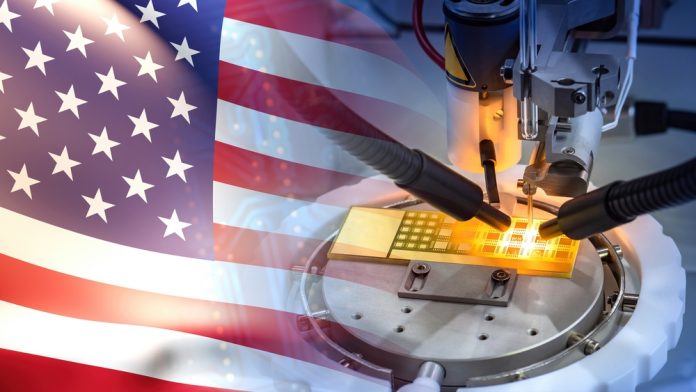The United States Department of Defense has announced a new $160m investment to bolster US semiconductor manufacturing.
This funding, part of the bipartisan CHIPS and Science Act, supports the Microelectronics Commons, a network of eight technology hubs dedicated to advancing the nation’s semiconductor production capabilities.
This latest allocation follows earlier CHIPS Act investments, totalling nearly $269m in September and nearly $240m the previous year, to strengthen the United States’ global semiconductor leadership.
Strengthening US semiconductor manufacturing: The role of the hubs
Of the latest $160m, $148m will be directed toward Microelectronics Commons Hubs to support infrastructure, operations, and workforce development.
This investment, distributed across the eight established hubs, targets regional semiconductor innovation and workforce readiness.
Each hub collaborates with local universities, research foundations, and industry leaders to address key challenges in the US semiconductor manufacturing industry.
Here’s a closer look at the funding distribution:
- Northeast Microelectronics Coalition (NEMC), led by Massachusetts Technology Collaborative, received $18.7m.
- Silicon Crossroads Microelectronics Commons (SCMC), led by the Applied Research Institute in Indiana, was awarded $16.6m.
- California Defense Ready Electronics and Microdevices Superhub (CA DREAMS), led by USC, obtained $27m.
- Commercial Leap Ahead for Wide Bandgap Semiconductors (CLAWS) in North Carolina, led by North Carolina State University, received $23.7m.
- Southwest Advanced Prototyping (SWAP) in Arizona, led by Arizona State University, received $18.7m.
- Midwest Microelectronics Consortium (MEMC) in Ohio was granted $12.3m.
- Northeast Regional Defense Technology (NORDTECH) in New York received $10.6m.
- California-Pacific-Northwest AI Hardware Hub (NWAI), based at Stanford University, was allocated $15.3m.
An additional $10m will fund a Cross-Hub Enablement Solution (CHES) to facilitate shared access to Electronic Design Automation (EDA) tools and cloud computing resources across all hubs.
National collaboration in focus at the 2024 symposium
The Microelectronics Commons network convened its annual meeting in Washington, DC, from October 28–30, gathering over 2,000 participants to discuss advancements in semiconductor manufacturing and technology.
Deputy Secretary of Defense Kathleen Hicks emphasized the unity and strategic importance of semiconductor production, stating, “Chips bring America together.”
During the symposium, each hub presented progress updates, highlighting key projects, workforce training initiatives, and the importance of “lab-to-fab” pathways—efforts to expedite research to manufacturing.
This cross-industry collaboration is crucial to ensuring a robust semiconductor supply chain that supports national security.
Sustaining US leadership in semiconductor innovation
As the US semiconductor manufacturing sector continues to expand through the CHIPS and Science Act, industry stakeholders are optimistic about the potential to secure America’s position as a global leader in advanced microelectronics.
This ongoing investment in the Microelectronics Commons strengthens the path toward a resilient and self-sufficient semiconductor industry.









